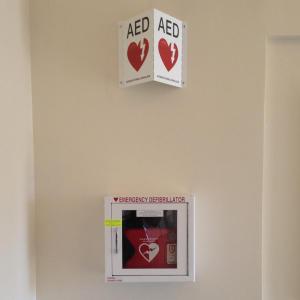Program Overview
The University of Virginia is committed to maintaining the safety of all students, faculty, staff, and visitors to Grounds. To this end, UVA Emergency Management oversees and maintains the University's Public Access Defibrillation (PAD) program.
AEDs and Sudden Cardiac Arrest
Sudden cardiac arrest occurs when the heart stops beating. This condition affects nearly 400,000 Americans annually, and is responsible for 1 death every 90 seconds in the United States. Each year, sudden cardiac arrest claims more lives than cancer, diabetes, respiratory diseases, and accidental trauma combined. AEDs are clinically proven to increase survival from sudden cardiac arrest. Studies have shown that the early application (within 3-4 minutes of the onset of cardiac arrest) of an AED can increase survival rates by nearly three times.
UVA's AED Program
Map of AEDs at UVA (Click any location to find additional information such as room number and location description)
Listing of Public AED Locations
Cardiopulmonary Resuscitation (CPR)
Cardiopulmonary resuscitation (CPR) plays a vital role in the chain of survival from cardiac arrest. While the first uses of external chest compressions were documented as early as 1903, CPR did not become a standard of treatment until the early 1960s. Endorsed by the American Heart Association in 1963, CPR has evolved ever since. As more research is conducted on the subject of cardiac arrest, the American Heart Association continues to refine its guidelines, which generally are released every five years. In a recent update, the option of "Hands Only CPR" was introduced. Aimed at non-professional rescuers, "Hands Only CPR" removes mouth-to-mouth from the steps of CPR, instead focusing only on high quality chest compressions.
Contact Information
General Program Information
For more information on the AED program, please contact [email protected].
For information on CPR/AED courses offered at the University please visit the UVA Life Support Learning Center.
AED Issues
If you notice an issue with an AED, or it is used, contact [email protected].

